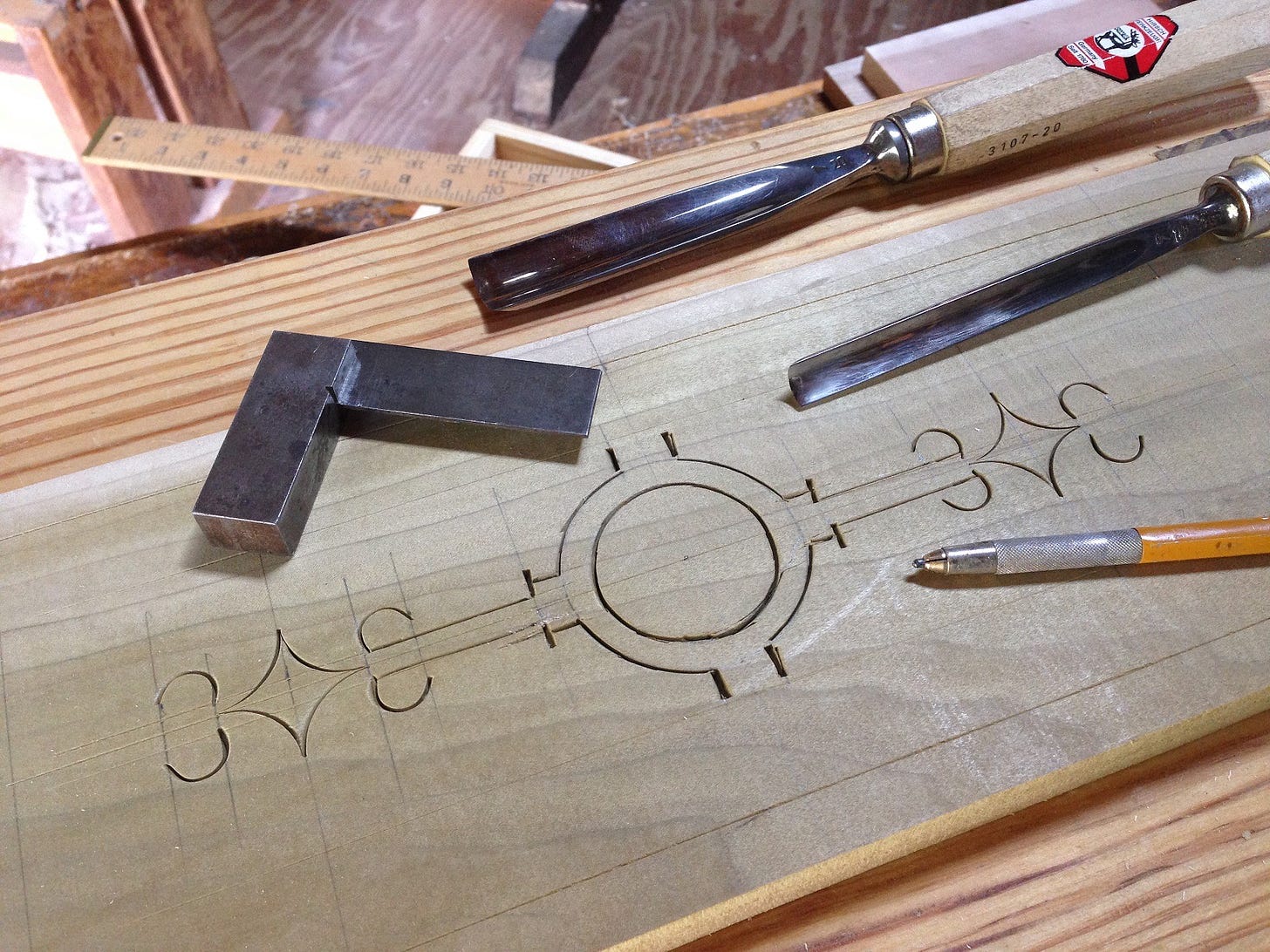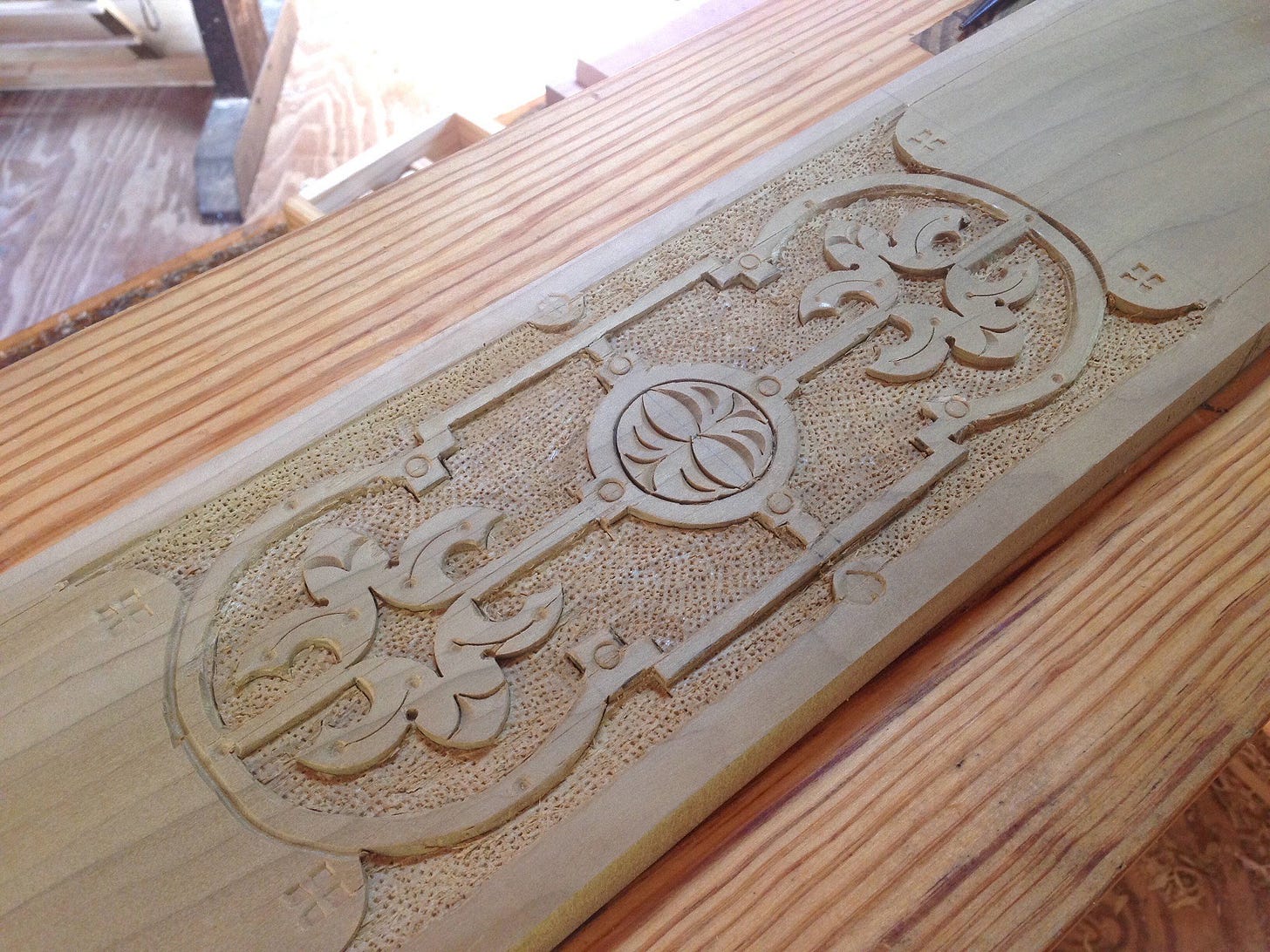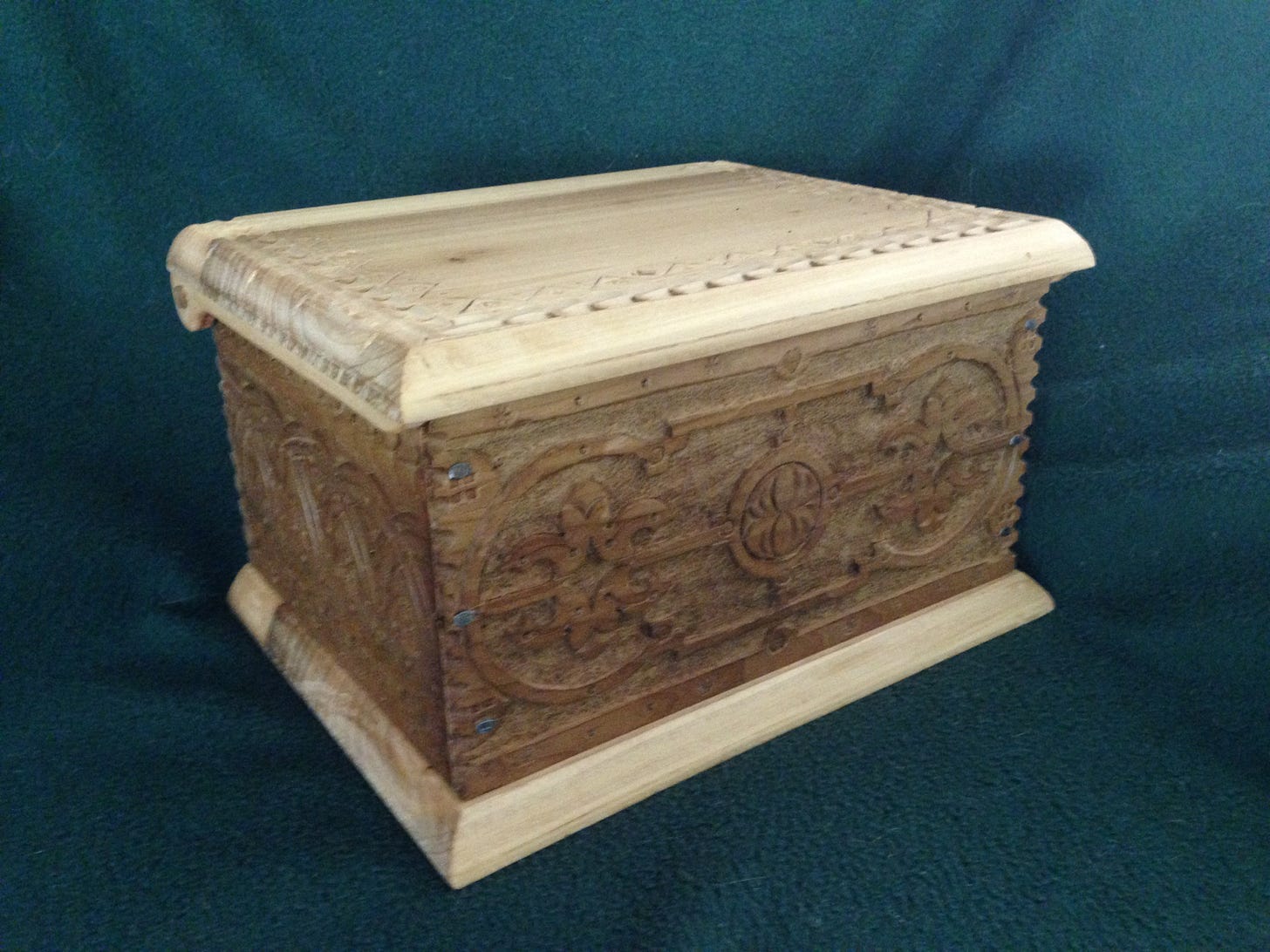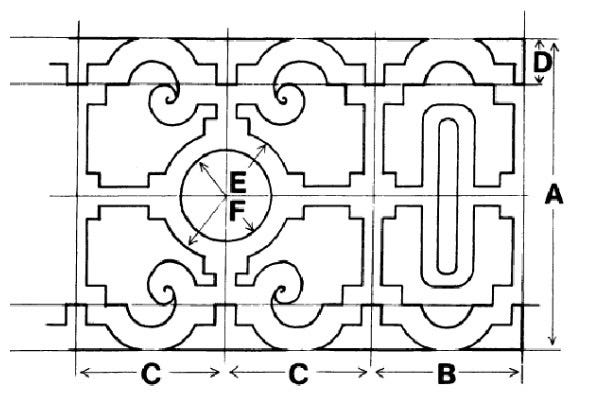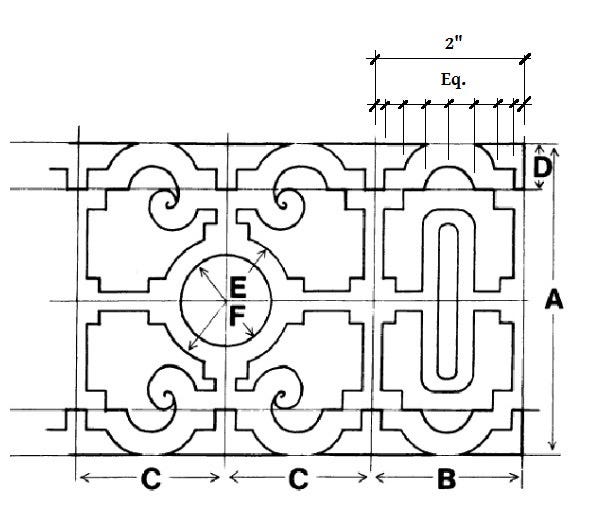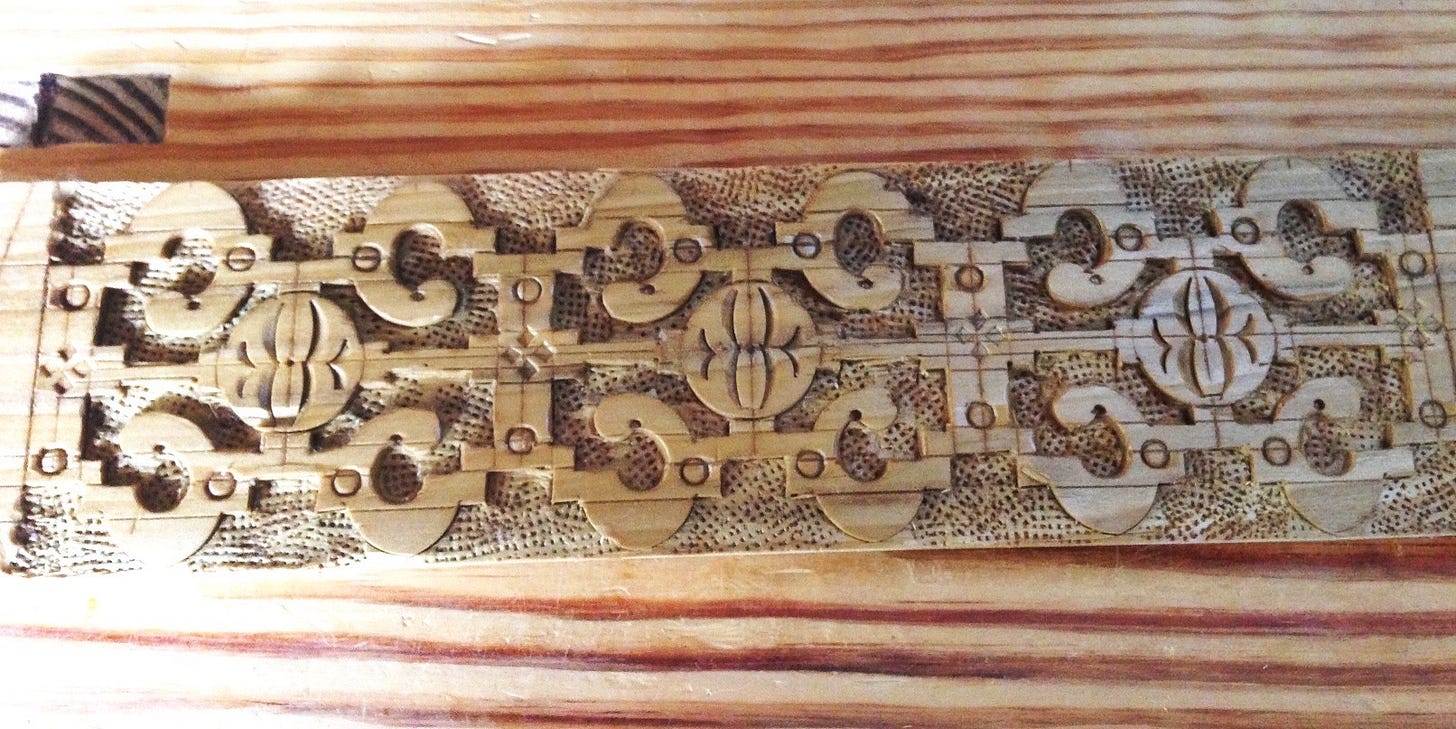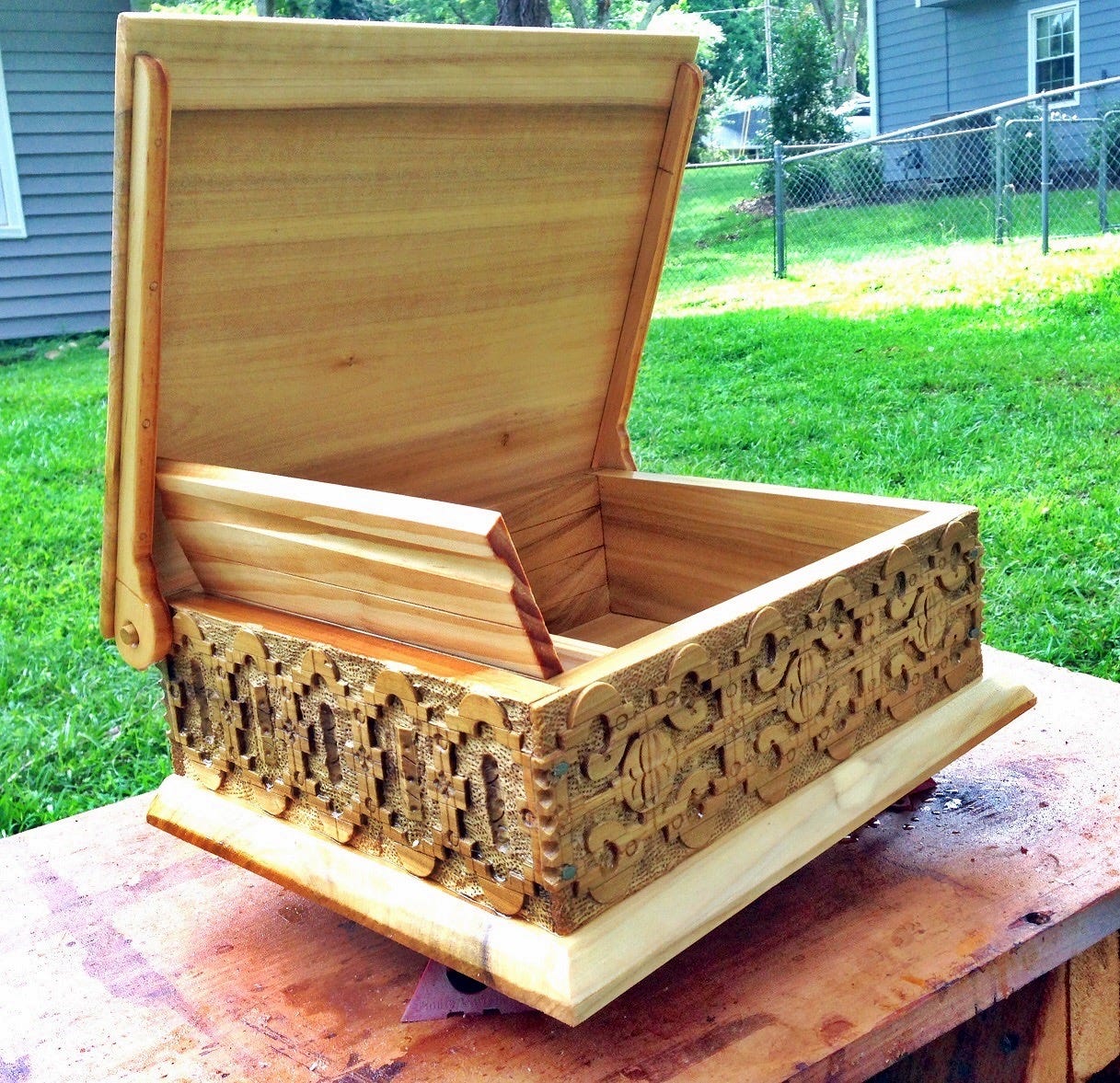Strapwork
Strapwork originated from the flat scrollwork commonly found in Islamic metalwork. It was fully developed in the Netherlands around 1540. Flemish and German woodworkers introduced strapwork to England in the late 16th century, where it became widely used.
This stylized ornament consists of decorative forms resembling intricately cut strips of leather or parchment. It radiates outward from a central point, typically a circle, and the pattern extends in various directions: upward, downward, to the left, and the right. The possibilities for the paths this pattern can take are virtually endless.
Here I have laid out a strapwork pattern for a box front in poplar. Quite a different look with the background removed. Wouldn’t you agree?
When it comes to decorations, I genuinely believe that strapwork stands out as the most versatile option. The possibilities are virtually limitless, allowing for endless creative variations that can truly transform any space!
Wanting to carve something a bit more historically accurate, I took to the Internet for some research. I came across an article by Anthony Wells-Cole, published in Furniture History, vol. 17, 1981, an annual publication of The Furniture History Society, entitled: An Oak Bed at Montacute: a Study in Mannerist Decoration. The article is a study of a particular strapwork design found on seventeenth-century furniture in Devon, England, and Ipswich, Massachusetts. For me, the article drove home the notion that countless variations of a particular pattern are indeed possible. The following drawing helps to illustrate this fact.
All of the historical combinations are simply too numerous to list. I will, however, share the dimensions I chose: A = 3-1/2″ ; B = 2″ ; C = 2″ ; D = 3/4″ ; E = 1-14″ ; F = n/a.
These dimensions are reportedly from the strapwork pattern found on the Joined Great Chair in the Bowdoin College Museum of Art, Brunswick, Maine. However, upon further examination, this too is subject to interpretation!
I utilized a combination of tools, including a 1/4″ and 1/2″ chisel, a 10mm and 20mm #7 straight gouge, a 10mm #11 straight gouge, a nail set, a try square, a 6mm #3 straight gouge for background removal, and a shop-made stippling tool. With these, I was able to effectively replicate the pattern and I feel that the result turned out quite well.


